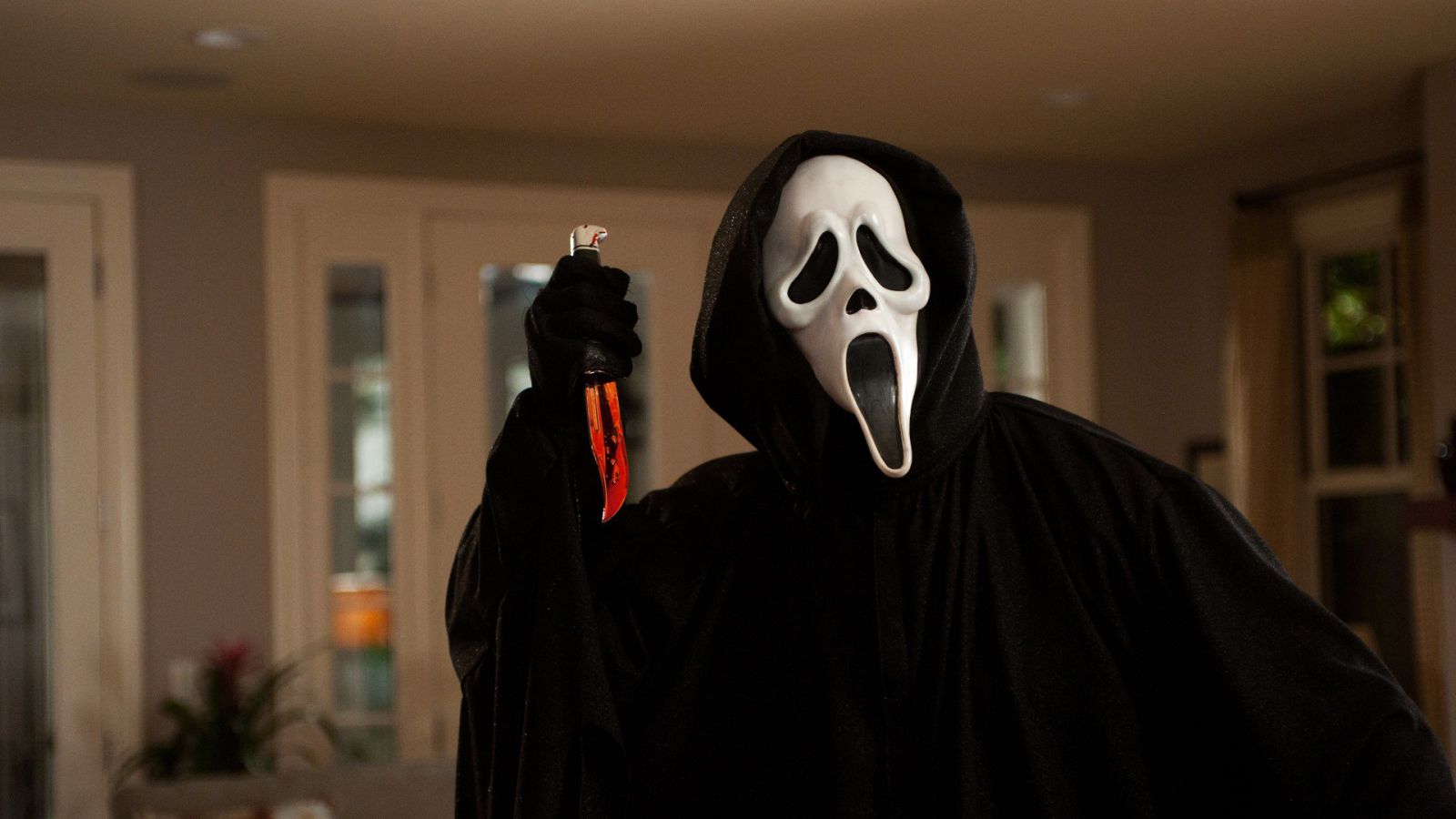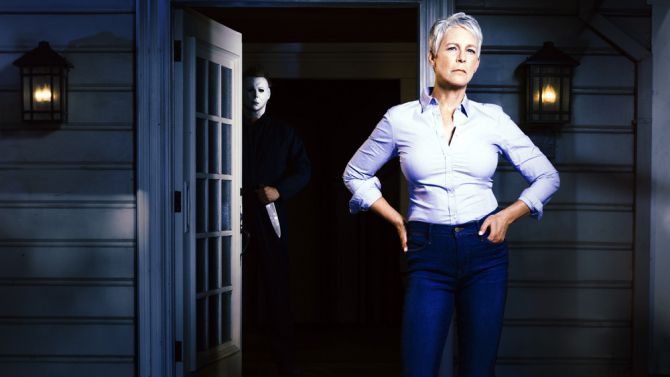What’s your favorite scary movie? December 20th marks the 20th anniversary of the revolutionary self-aware horror film, Scream. It was the film that reinvigorated the horror genre and, along with its three sequels and MTV television spin-off, has created a legacy.
Each year the movie theaters are bombarded with sequels, remakes and the occasional original fright fests that will certainly earn several times its budget. Moviegoers crave horror films and it is the one genre that guarantees an audience. Just as the housing market tends to take financial dips, horror films too momentarily dropped in popularity after the early scary stuff of Peeping Tom and Psycho. Prior to those films, monster movies were the only way viewers could give themselves nightmares by going to the movies.
Horror Genre Reboot

The Horror genre has influenced many modern directors, as well as screenwriters that, although conflict with many critic's opinions, find massive success. There are the classic opening sequences that audiences have grown to respect for their predictability. A young teenage girl is about to enjoy an evening of scary movies with her boyfriend but she is interrupted by a troublesome phone call that turns from friendly and flirtatious banter to a threatening hateful game which ultimately turns to a grisly death. This setup has made countless slasher films famous, such as 1979’s When a Stranger Calls. But before that, there was 1974's creepy college flick Black Christmas.
In 1996, Wes Craven directed a similar setup with Drew Barrymore in the opening moments of Scream, which was a nod to the films that came before it.
Production Comes Together
Kevin Williamson, the writer behind Scream, didn’t steal this familiar scene. He was merely inspired by those films like any other film geek. Williamson was a struggling screenwriter at the time of composing Scream. He had already written but had not sold Killing Mrs. Tingle, later called Teaching Mrs. Tingle. But, at that time, there were no studios in a hurry to work with him. As the tale goes, it was while house-sitting for friends and watching news reports on the Gainsville Ripper when he came up with the premise of Scream.
After a bidding war with a slew of major studios, Miramax won the script. The studio knew it was the ideal film to be released by their genre-specific production branch, Dimension. Along with a strong script, Horror legend, Wes Craven was approached to direct and the cast was filled with youthful and talented actors. Along with familiar faces from prime-time television, Neve Campbell and Courteney Cox, the cast also included up and coming actors Matthew Lillard, Rose Mcgowan and David Arquette.
Scream Release

When the film was released days before Christmas, it was a gamble considering the holiday season is not known for its horror releases. While the opening weekend was a bit of a disappointment, the box-office numbers only increased each weekend thanks to favorable reviews and word-of-mouth.
The modern horror film was back.
Scream makes countless references to its predecessors, but in a more honorable way than those that merely plagiarize. Take for example the 1981 mediocre slasher My Bloody Valentine, which ripped off elements of Prom Night, Terror Train, and 1972's Home for the Holidays. Williamson brought a freshness and humor to a genre that wasn't known for either. His geek-boy love for horror flicks was what made it something special and irreverent. All while Wes Craven gave the film that extra credibility.
New Type of Horror
Before the self-aware modern movies that were vehicles for young actors, who also adorned magazine covers and network teen shows, there was a small gem of a movie that started a whole new genre, Psycho. A film that left millions of moviegoers afraid to take showers.
In 1974, the small sleeper, The Texas Chainsaw Massacre terrified everyone because of the documentary-like grainy filming that was so realistic. Going on to create yet another sub-genre to horror. Then in 1978 came a movie that was so alarming with its subtle camera movement and its ability to limit the blood and gore in favor of genuine fright. There were many movies after it that followed its formula, and many that were blatant rip-offs, but they all started with John Carpenter’s Halloween. A franchise-starting film that introduces audiences to the masked villain Michael Myers.
Although her friends did not escape the knife wielding mental patient, Jamie lee Curtis survived to make the sequel two years later. She would take a break after that only to return for its seventh and eighth entry. She was the original scream queen. The title has been passed on to many including Neve Campbell, but Curtis will always be remembered as the pioneer who also starred in Prom Night, Terror Train and The Fog.
80s Horror

The eighties were filled with many poorly made attempts. Such as Night School and Cutting Class, movies that would probably make F.W. Murnau turn in his grave. The movies can be an amusing treat. The Friday the 13th series alone are worth a nice Mystery Science Theater-like chuckle. There were some highlights in the eighties including the Craven's 1984, A Nightmare on Elm Street St starring the most relentless boogeyman of them all, Freddy Krueger. He was not just a normal bad guy as he was killing the teens of Elm Street by infiltrating their dreams. There were so many horrid horror movies of the eighties and early nineties most thought the genre was dead. With a decade that brought killer buddy dolls and evil leprechauns it seemed like a likely prediction.
Scream a Hit
The success of Scream opened the floodgates for more teen horror movies that brought in major box office. There were the good (I Know What You Did Last Summer), the bad (I still Know What you did Last Summer), and the ugly (Valentine).Scream went from referencing other films to referencing itself in extremely meta ways with its sequels. One year after Scream, Scream 2 was unexpectedly well made. The return of writer and director along with the stars who survived the first film and a few more additions including Timothy Olyphant, Rebecca Gayheart (who would later get a beefier horror role in 1998’s Urban Legend) and Jerry O'Connell. Sarah Michelle Gellar and Joshua Jackson filled roles for what seemed like a faces of The WB quota. A casting direction that was popular for teen films of the late '90s.
Scream Sequels

The Scream love faltered with 2000’s Scream 3, which may have been due to a new writer and the ridiculous killer plot-line. It still had a pitch-perfect cast and a lot of laughs. In Fact, Scream 3 was more like a pure comedy poking fun at itself than anything resembling frightening. Over a decade late, Scream 4 made a comeback.
While the fourth entry didn’t rake in the box office money the first two films were able to, fans of the series were not disappointed by its humor, thrills, and typical meta quality. There was enough revived interest from the fourth film to inspire a series on MTV. While the show did not include the ghost-face mask, any of the film's characters or much of anything, it did feature the spirit of the film series. Likable teen archetypes, including the film geek who is always willing to supply his knowledge of horror films, make up the cast of of a group of friends. All of which are being stalked and murdered one by one by a mysterious killer.
Franchise Strength
20 years after the release of Scream, the horror genre is still thriving. While there have been plenty of low-brow stinkers that have used the popularity of the genre to make a cheap film and make some cash, there are other filmmakers who respect the genre enough to make something memorable. Scream influenced audiences and studios. Horror films are not just for B-quality forgettable flicks, they instead hold great potential for creative and commercial success.








Comments